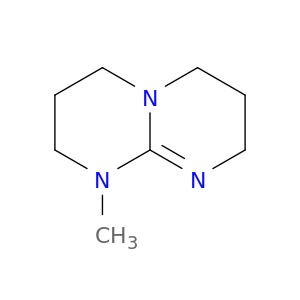
1,3,4,6,7,8-Hexahydro-1-methyl-2h-pyrimido[1,2-a]pyrimidine
| Title | Journal |
|---|---|
| C-C bond formation with carbon dioxide promoted by a silver catalyst. | Angewandte Chemie (International ed. in English) 20120709 |
| Perfectly alternating copolymerization of CO2 and epichlorohydrin using cobalt(III)-based catalyst systems. | Journal of the American Chemical Society 20110928 |
| Evaluation of ion mobility spectroscopy for determining charge-solvated versus salt-bridge structures of protonated trimers. | Journal of the American Society for Mass Spectrometry 20050701 |
| Structural consequences of the prohibition of hydrogen bonding in copper-guanidine systems. | Inorganic chemistry 20040809 |
| 1,8-bis(tetramethylguanidino)naphthalene (TMGN): a new, superbasic and kinetically active 'proton sponge'. | Chemistry (Weinheim an der Bergstrasse, Germany) 20020402 |
| A study of the possible and preferred site of protonation in 7-methyl-1,5,7-triazabicyclo[4,4,0]dec-5-ene by vibrational spectroscopic methods. | Spectrochimica acta. Part A, Molecular and biomolecular spectroscopy 20010301 |